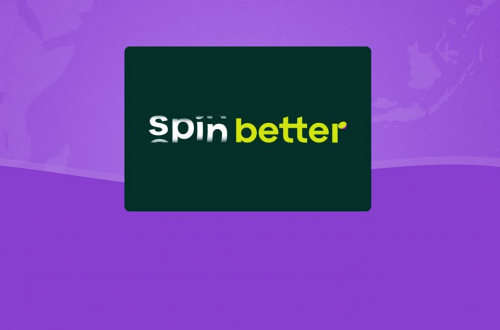Betting limits and restrictions are integral aspects of the sports betting industry, designed to ensure fair play, manage risk, and protect both bettors and bookmakers. Understanding these limits and restrictions can help bettors make informed decisions and navigate the betting landscape more effectively. This article explores the various types of betting limits and restrictions, their purposes, and how they are implemented by leading betting platforms.
Types of Betting Limits
Minimum and Maximum Bet Limits
Minimum and maximum bet limits are the most common types of restrictions imposed by bookmakers. These limits define the smallest and largest amounts that can be wagered on a single bet.
- Minimum Bet Limits: These are the smallest amounts that bettors can wager on a single bet. Minimum bet limits are typically set to ensure that the bookmaker can cover operational costs and maintain profitability.
- Maximum Bet Limits: These are the largest amounts that bettors can wager on a single bet. Maximum bet limits are designed to manage the bookmaker’s risk and prevent significant losses from large bets.
Deposit and Withdrawal Limits
Deposit and withdrawal limits regulate the amount of money that bettors can deposit into and withdraw from their betting accounts.
- Deposit Limits: These limits define the minimum and maximum amounts that bettors can deposit into their accounts at one time. Deposit limits help prevent money laundering and ensure responsible gambling.
- Withdrawal Limits: These limits define the minimum and maximum amounts that bettors can withdraw from their accounts at one time. Withdrawal limits help manage the bookmaker’s liquidity and ensure that payouts are sustainable.
Winning Limits
Winning limits cap the maximum amount that bettors can win from a single bet or within a specific period. These limits are designed to manage the bookmaker’s risk and ensure sustainability.
- Single Bet Winning Limits: These limits cap the maximum amount that bettors can win from a single bet. Single bet winning limits help manage the bookmaker’s risk and prevent significant payouts from large bets.
- Daily/Weekly/Monthly Winning Limits: These limits cap the maximum amount that bettors can win within a specific period, such as a day, week, or month. These limits help manage the bookmaker’s risk and ensure sustainability over time.

Purposes of Betting Limits
Risk Management
Betting limits are primarily designed to manage the bookmaker’s risk and ensure sustainability. By imposing limits on bet sizes, deposits, withdrawals, and winnings, bookmakers can protect themselves from significant losses and maintain profitability.
- Managing Exposure: Betting limits help bookmakers manage their exposure to risk by capping the maximum amounts that can be wagered and won.
- Preventing Arbitrage: Betting limits can help prevent arbitrage opportunities, where bettors exploit discrepancies in odds between different bookmakers to guarantee profits.
- Ensuring Liquidity: Betting limits help ensure that bookmakers have sufficient liquidity to cover payouts and maintain operations.
Fair Play and Responsible Gambling
Betting limits also play a crucial role in promoting fair play and responsible gambling. By imposing restrictions on bet sizes, deposits, and withdrawals, bookmakers can help prevent problem gambling and ensure a safe and enjoyable betting experience for all participants.
- Preventing Problem Gambling: Betting limits can help prevent problem gambling by capping the maximum amounts that can be wagered and won, encouraging bettors to gamble responsibly.
- Protecting Vulnerable Bettors: Betting limits can help protect vulnerable bettors, such as minors or individuals with gambling addictions, by imposing restrictions on bet sizes, deposits, and withdrawals.
- Promoting Fair Play: Betting limits help promote fair play by ensuring that all bettors have an equal opportunity to participate and win, regardless of their bet sizes or bankrolls.
Additional Restrictions and Considerations
Geographical Restrictions
Geographical restrictions limit the availability of betting services to specific regions or countries. These restrictions are often imposed due to legal and regulatory requirements.
- Legal Compliance: Geographical restrictions help ensure that betting platforms comply with local laws and regulations, preventing illegal gambling activities.
- Market Focus: Geographical restrictions allow betting platforms to focus on specific markets, tailoring their services to the needs and preferences of bettors in those regions.
Age and Identity Verification
Age and identity verification are crucial for promoting responsible gambling and preventing underage gambling.
- Age Verification: Betting platforms require bettors to verify their age to ensure that they are of legal gambling age, preventing underage gambling.
- Identity Verification: Betting platforms require bettors to verify their identity to prevent fraud and ensure that all participants are legitimate and eligible to gamble.
Self-Exclusion and Cooling-Off Periods
Self-exclusion and cooling-off periods are important tools for promoting responsible gambling and helping bettors manage their gambling activities.
- Self-Exclusion: Self-exclusion allows bettors to voluntarily exclude themselves from gambling activities for a specified period, helping to prevent problem gambling and promote responsible gambling.
- Cooling-Off Periods: Cooling-off periods allow bettors to take a temporary break from gambling activities, helping to manage their gambling habits and prevent problem gambling.
Conclusion
Understanding betting limits and restrictions is essential for bettors to navigate the sports betting landscape effectively. From minimum and maximum bet limits to deposit and withdrawal limits, winning limits, and additional restrictions, these measures are designed to promote fair play, manage risk, and ensure responsible gambling.





